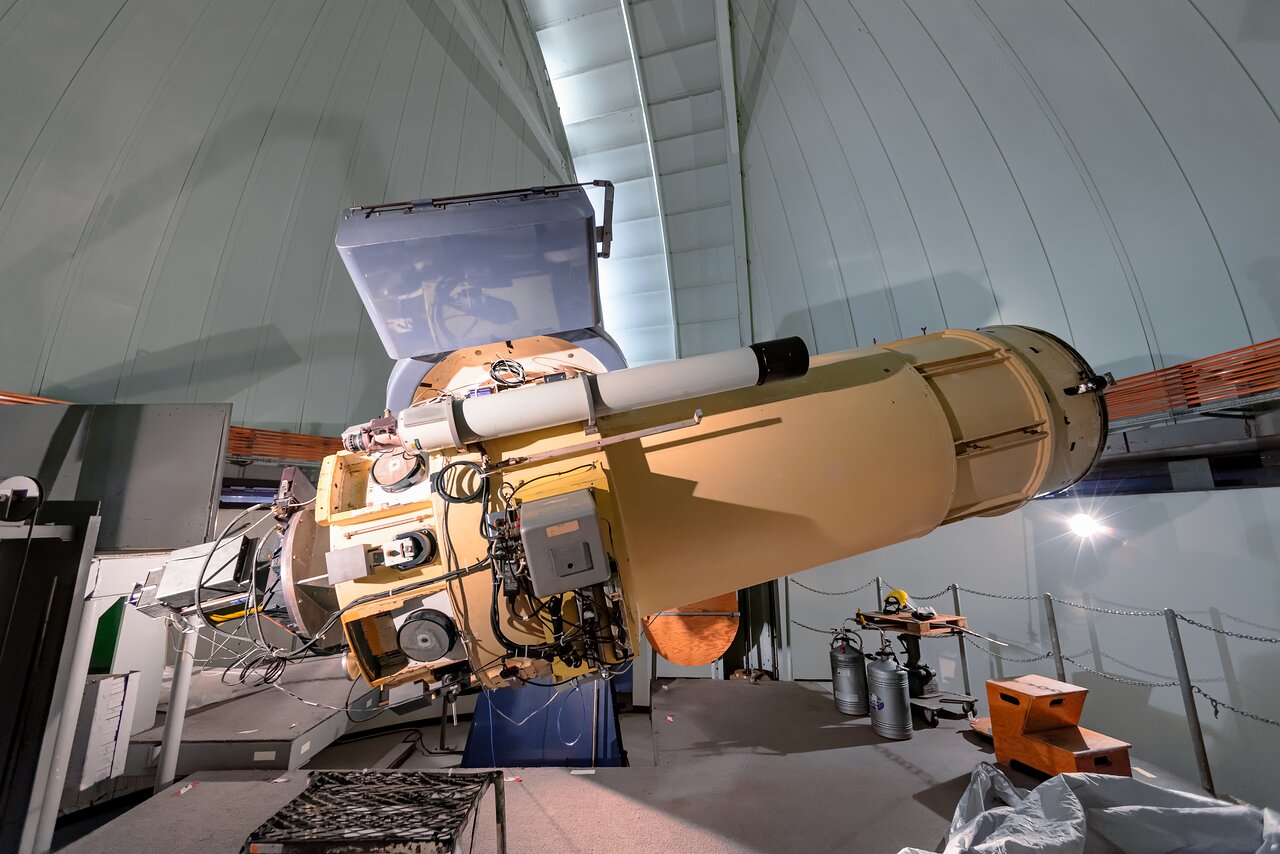SMARTS Consortium: 0.9-meter Telescope
The Small and Moderate Aperture Research Telescope System (SMARTS) Consortium operates four small telescopes on Cerro Tololo in Chile. Membership in SMARTS is open to individuals or institutions, including international partners.
The SMARTS 0.9-meter Telescope was constructed in 1965 by Boller & Chivens and is a closed-tube design telescope, with instruments attached at the bottom at the Cassegrain focus. The telescope has been operated by the SMARTS Consortium since February 2003. As of August 2020 the 0.9-meter is used for direct imaging with a dedicated 2048x2046 CCD detector. A CCD-based autoguider, which looks at a small off-axis field, is permanently installed.
SMARTS 0.9-meter Telescope
|
SMARTS 0.9-meter telescope web page
About the 0.9-m Telescope
The SMARTS 0.9-meter telescope is a Cassegrain telescope mounted on an off-axis, asymmetric mounting and used on the east side of the pier. As of August 2020 the 0.9m is used for direct imaging with a dedicated 2048x2046 CCD detector. A CCD-based autoguider, which looks at a small off-axis field, is permanently installed. The 0.9-m has been operated by the SMARTS Consortium since 2003 FEB 01.
Check 0.9-m History here.
Observing mode
Classical observing only. In special circumstances some service observing may be possible. Contact Todd Henry for information.
Instruments
Since (at least) 1999, the 0.9-m has been equipped with a dedicated 2048x2046 Tek2K CCD detector. Please refer to the Tek2K instrument page for CCD characteristics.
Note that visitor instruments have been used at the 0.9-m for engineering, which provides a telescope amenable to many imaging applications.
Filters
There are two stacked filter wheels at the 0.9-m. The top wheel includes a color balance filter (for dome flats), neutral density filters, and open slots. The bottom filter wheel slot can hold wheels with 3x3 inch filters (up to 8 filters, typically at least BVRI) or 4x4 inch filters (up to 5 filters, typically ugriz).
See the Filter list for more information on the available filters.
Time Synchronization
For projects that require accurate timing information, here is a quick overview on how the time ends up in the image headers.
There are two different header entries relating to time, UT and UTSHUT:
UT is read from the TCS. While there is a GPS receiver that displays accurate Universal Time in the 0.9-m console room, this information is currently not communicated to the TCS automatically. Instead, the UT should be checked and manually entered into the TCS at the beginning of each night. The absolute accuracy is therefore at best ~1 sec. The TCS clock may drift slightly during the night and is therefore not reliable for precise absolute or relative timing.
UTSHUT is taken from the Torrent controller's clock, which is synchronized to the (needs updating) ...
To check for the correct UT time on the web, try this link to the USNO Master Clock.
Updated on September 26, 2022, 2:37 am
